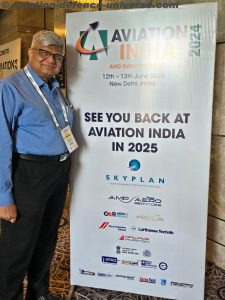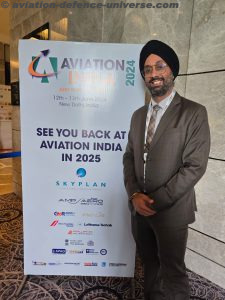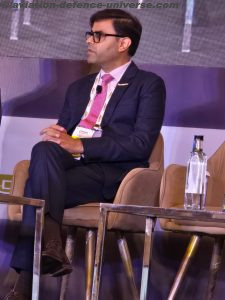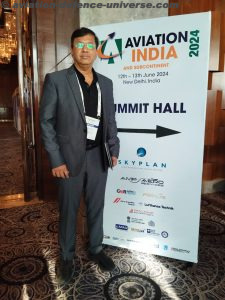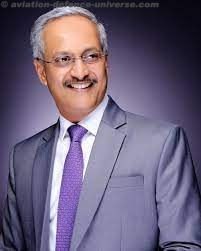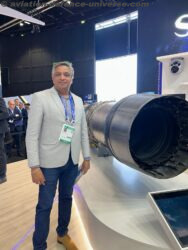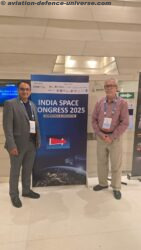By Sangeeta Saxena
New Delhi. 08 June 2024. Takes years to design it, weeks to build it, seconds to break it and a lifetime to keep it airworthy – no prizes for guessing we are talking about the aircraft but all applause for realising that we are here appreciating whole heartedly the people who keep the aircraft flying by maintaining it, repairing it and overhauling it. Behind every safe flight is their tireless effort. “ MRO is also the logical fire tender for the aircraft in the air. We protect aircraft in the air, we make sure that the aircraft are always safe, by ensuring continuous airworthiness and thereby air safety. The manufacturers make great aircraft but to keep them in the skies is the MRO’s job and we are the fire brigades in the air,” quipped Bharat Malkani, CMD Max Aerospace, the biggest military MRO in the country. He was speaking with Editor Sangeeta Saxena in an exclusive interview to Aviation & Defence Universe (ADU) at the pre-event of the Aviation India 2024.
ADU. Defence MRO in India is largely captive with the Army, Navy and Air Force supported to an extent by HAL and the forces’ own systems of maintenance. What are the scopes they leave for private MROs?
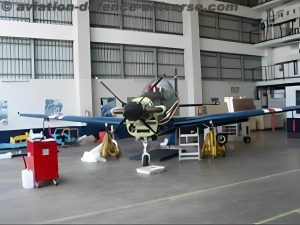 BM. HAL is a manufacturer of Aircraft. They are currently manufacturing the Tejas (LCA), Dhruv (ALH) and several new products including Tejas Mark 2, AMCA and multiple variants of the ALH. Globally large Airframers like Boeing, Airbus or Embraer do not perform MRO as this is not a big revenue earner as manufacturing. Similarly, we expect HAL to concentrate more on manufacturing and allow MRO to be performed by private MRO companies.
BM. HAL is a manufacturer of Aircraft. They are currently manufacturing the Tejas (LCA), Dhruv (ALH) and several new products including Tejas Mark 2, AMCA and multiple variants of the ALH. Globally large Airframers like Boeing, Airbus or Embraer do not perform MRO as this is not a big revenue earner as manufacturing. Similarly, we expect HAL to concentrate more on manufacturing and allow MRO to be performed by private MRO companies.
ADU. Is there a growing awareness within the Indian Defence establishment on the value of outsourcing non-core maintenance activities to third party operators?
BM. There is a growing awareness in India of the above yes, however, there is also inertia. The methodology followed by us is archaic and is resident on the socialist roots that had taken a grip of the nation for a period after Independence. That seems to have passed and the sector is opening slowly.
ADU. Do you have all the three – transport, rotorcraft and multi-role aircraft MRO activities at Max Aerospace?
BM. Max Aerospace has the highest level of certifications of any MRO in India from all regulatory agencies and covering all types of Aircraft, both Civil and Military. We support multiple platforms from various countries.
ADU. What is the MRO sector growth in defence MROs and the MRO revenue? How do you see both in the next five years?
 BM. Indian MRO’s can become the biggest companies offering these capabilities and services over the next five years. We need some major policy changes that recognizes the ability of this industry to literally ‘Take Off’. If however, that does not happen, we will continue to grow in small steps and not achieve our global potential.
BM. Indian MRO’s can become the biggest companies offering these capabilities and services over the next five years. We need some major policy changes that recognizes the ability of this industry to literally ‘Take Off’. If however, that does not happen, we will continue to grow in small steps and not achieve our global potential.
ADU. Has the decision of lessening the GST for the MRO industry affected the defence MROs positively? Or is it an old story now?
BM. This is both an old story and ongoing ‘fresh’ story. GST regulations are not yet being interpreted in the spirit as they were drafted and as such Indian MRO’s have not reaped major benefits out of the same. The ‘old story’ part is some people believe that they have given ‘enough’ to the MRO industry, and we need to move on. However, any chain is only as strong as it’s weakest link and the implementation of the GST for Aviation spares continues to be the weakest link in this chain.
ADU. Which according to you are the pain points in running a defence MRO?
 BM. Some of them I can give you as simple bullet points.
BM. Some of them I can give you as simple bullet points.
- Over dependence on use of DPSU’s
- Lack of transparency for Private sector companies. Meaning, none of the Indian MRO companies have a plan shared by the Government on the long-term plans for induction of new aircraft.
- Total lack of infrastructure available for private companies.
- Lack of funds being offered to Indian private sector companies to develop infrastructure or technologies.
As told to Sangeeta Saxena


































